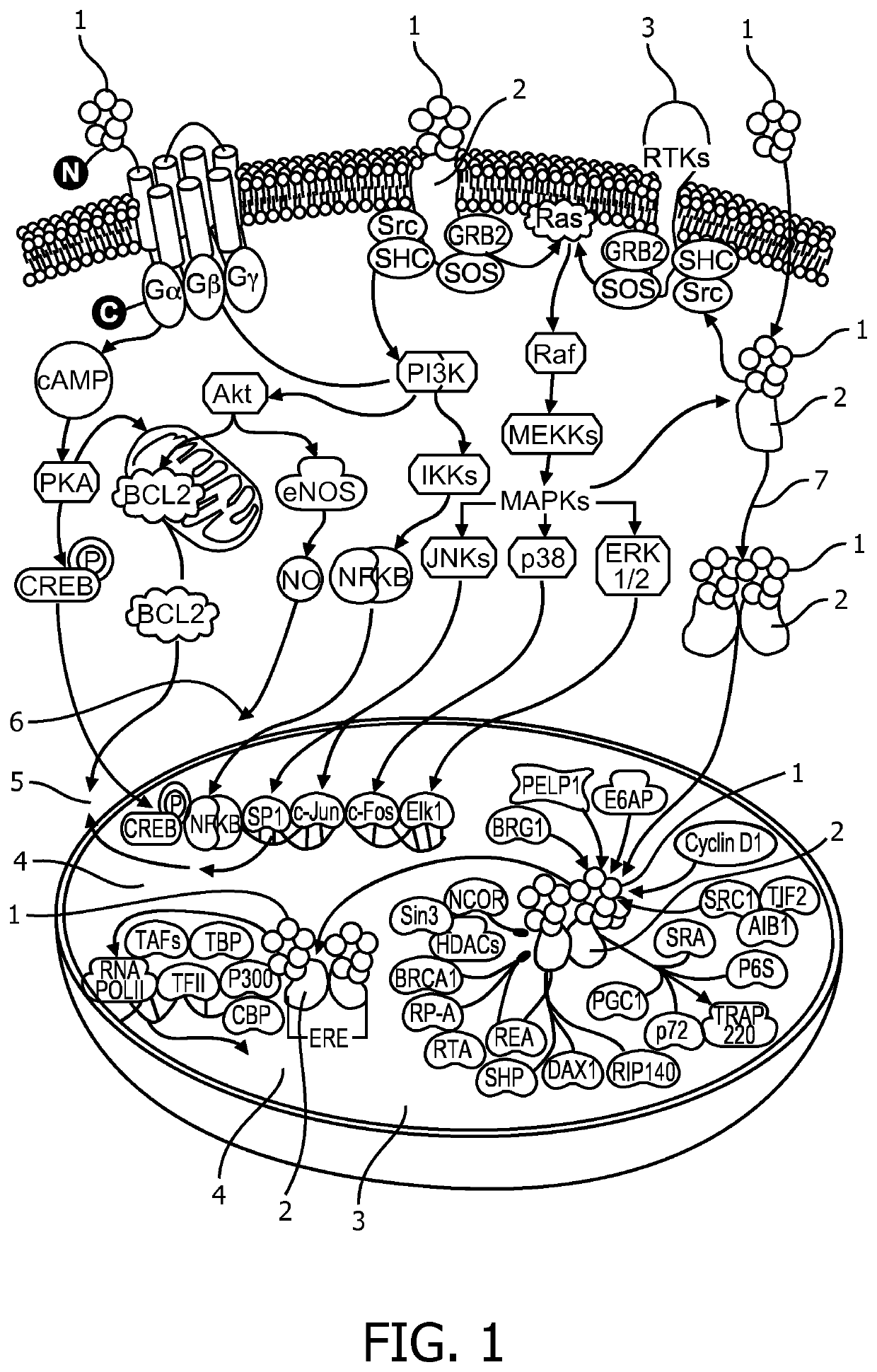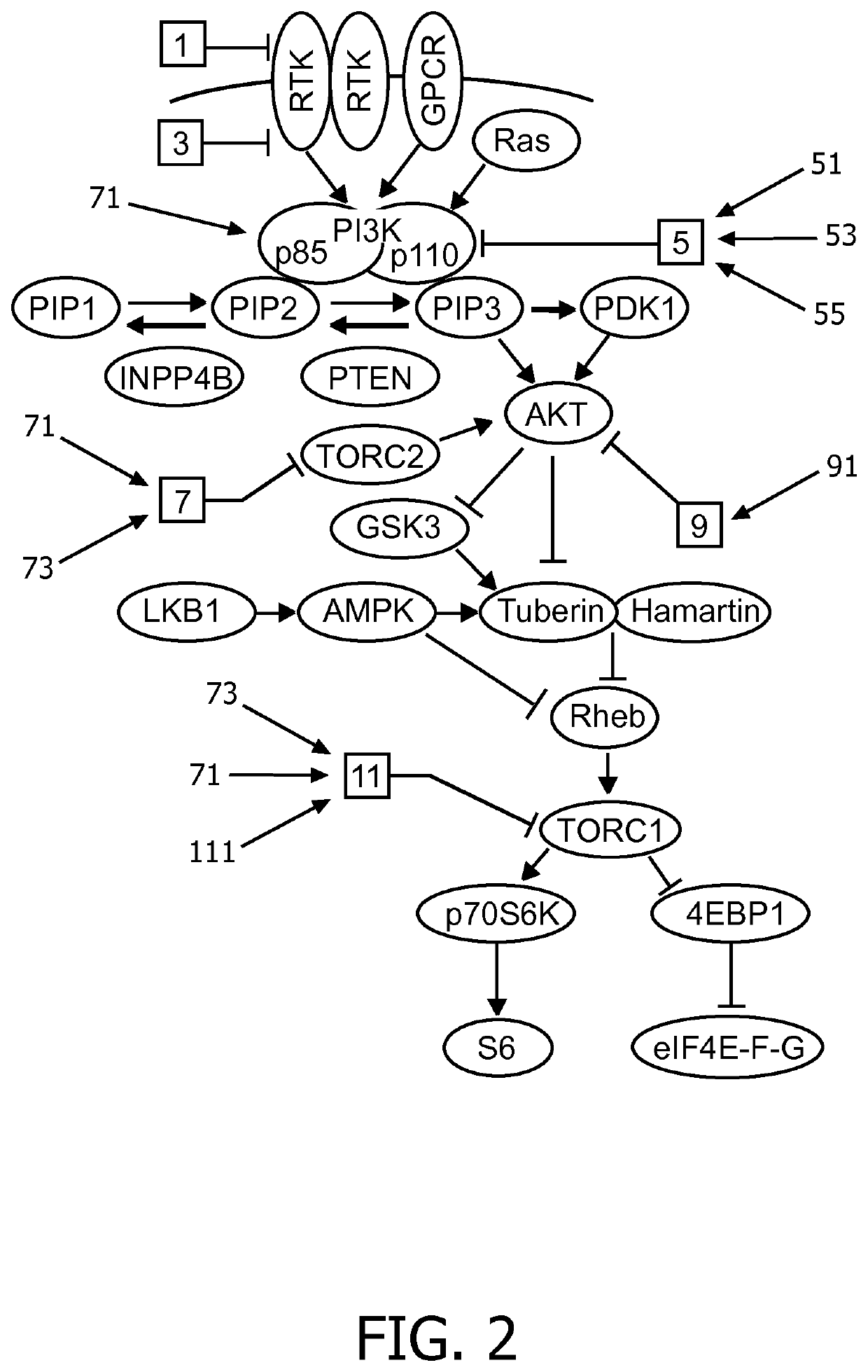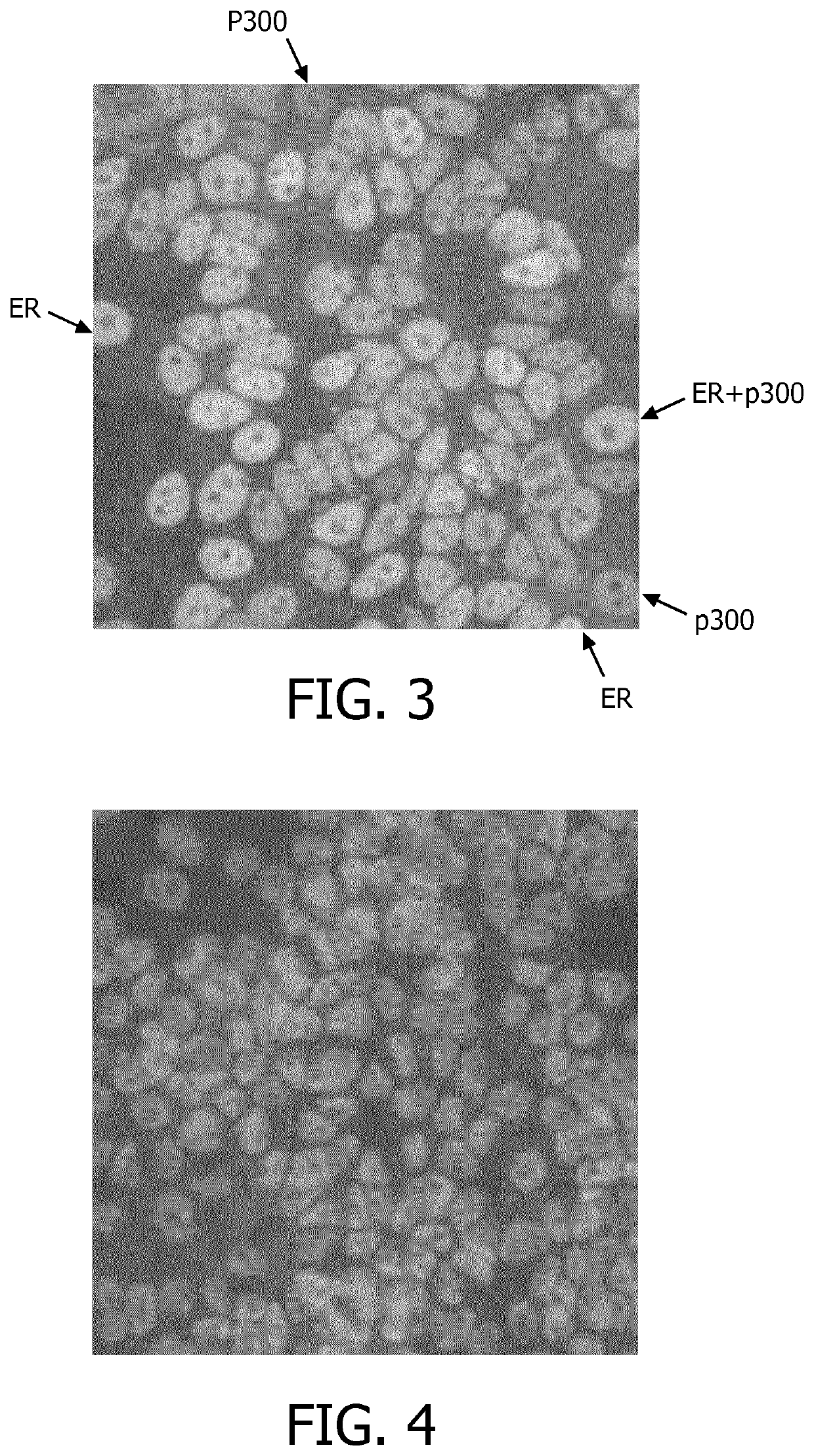Stratification of patients for assessing the suitability of a therapy
a patient and therapy technology, applied in the direction of chemical methods analysis, instruments, drug compositions, etc., can solve the problems of poor prognosis of patients, lack of evidence of active pathways, etc., and achieve the effect of accurate determination
- Summary
- Abstract
- Description
- Claims
- Application Information
AI Technical Summary
Benefits of technology
Problems solved by technology
Method used
Image
Examples
example 1
[0136]Indirect PLA assay to determine the activation status of an ER signaling pathway in cancer cell line samples spun on a substrate:
[0137]Two antibodies raised in different species (e.g. mouse and rabbit) are used, e.g. mouse antibody against an epitope on the Estrogen-ER dimer complex (Monoclonal Mouse Anti-Human Estrogen Receptor α, clone 1D5, Dako / Cat #M7047) and rabbit antibody against p300 (Anti-p300 mouse anti-human mAb, clone NM-11, Millipore / Cat #NA46-100UG or Anti-p300 CT mouse anti-human mAb, clone RW 128, Millipore / Cat #05-257).
[0138]
Protocol:Deparaffinization: 3 × 10 min xylene,40 min5 min 100% EtOH, short 100%EtOH and 70% EtOH, tap waterAntigen retrieval (optimum treatment45 minto be established for every newantibody): 20-45 min 95° C., pH 6 orpH 9, cooling to RT, 10-20 minWash 1-2× in PBSBlocking with Blocking Solution30 minfrom the PLA kit: 1 drop per 1 cm2,incubation 30 min, 37° C., humidifiedDrip of Blocking Solution (do not wash)Incubation with 2 unlabelled prim...
example 2
[0140]Direct PLA assay to detect phosphorylation status (=activation status) of Akt (to be made in addition to the assay of Example 1):
[0141]Two antibodies are used (can be form the same species: e.g. mouse antibody against Akt1 (F-8L, Santa Cruz Biotech) and another mouse antibody against phospho-Akt (18F3.H11, Abcam, ab105731))
[0142]
Protocol:Deparaffinization: 3 × 10 min40xylene, 5 min 100% EtOH, short100% EtOH and 70% EtOH, tapwaterAntigen retrieval (to be tested for45every new antibody): 20-45 min95° C., pH 6 or pH 9, cooling to RT,10-20 minWash 1-2× in PBSBlocking with Blocking Solution30from the PLA kit: 1 drop per 1 cm2,incubation 30 min, 37° C.,humidifiedDrip of Blocking Solution (do not wash)Incubation with 2 primary60antibodies (could be from same ordifferent species) conjugated to 2PLA probes (PLUS and MINUSoligonucleotides) in bufferPBS / 0.1% BSA / 1:20 Assay Reagentfor 1 hr, RT, in the dark, humidifiedWash 2 × 5 min in WashBuffer A10(= 10 mM Tris / 150 mM NaCl / 0.05%Tween ™ 2...
example 3
3.1 IHC Assays for ER and p300 in Both ER+ (MCF7) and ER− (SKBR3) Cell Lines
[0143]IHC assays for ER and p300 were first performed in both ER+ (MCF7) and ER− (SKBR3) cell lines.
[0144]The analyses clearly showed that both ER and p300 are present in the nucleus of MCF7 cells in varying concentrations. In particular, in the original color images obtained from the stained IHC assay, a number of the cells were colored greenish, which indicates the presence of ER, a number of the cells were colored reddish, which indicates the presence of p300, and a number of the cells were colored yellowish, which indicates a combined signal (cf. FIG. 3, which shows a grayscale image that is based on an original color image obtained from the stained IHC assay; the reference numerals “ER”, “p300”, and “ER+p300” exemplarily point to cells indicates as ER, p300 or combined). The differences in color in the original color images (in FIG. 3 reduced to differences in brightness) indicate that the expressions a...
PUM
| Property | Measurement | Unit |
|---|---|---|
| resistance | aaaaa | aaaaa |
| endocrine resistance | aaaaa | aaaaa |
| tamoxifen resistance | aaaaa | aaaaa |
Abstract
Description
Claims
Application Information
 Login to View More
Login to View More - R&D
- Intellectual Property
- Life Sciences
- Materials
- Tech Scout
- Unparalleled Data Quality
- Higher Quality Content
- 60% Fewer Hallucinations
Browse by: Latest US Patents, China's latest patents, Technical Efficacy Thesaurus, Application Domain, Technology Topic, Popular Technical Reports.
© 2025 PatSnap. All rights reserved.Legal|Privacy policy|Modern Slavery Act Transparency Statement|Sitemap|About US| Contact US: help@patsnap.com



